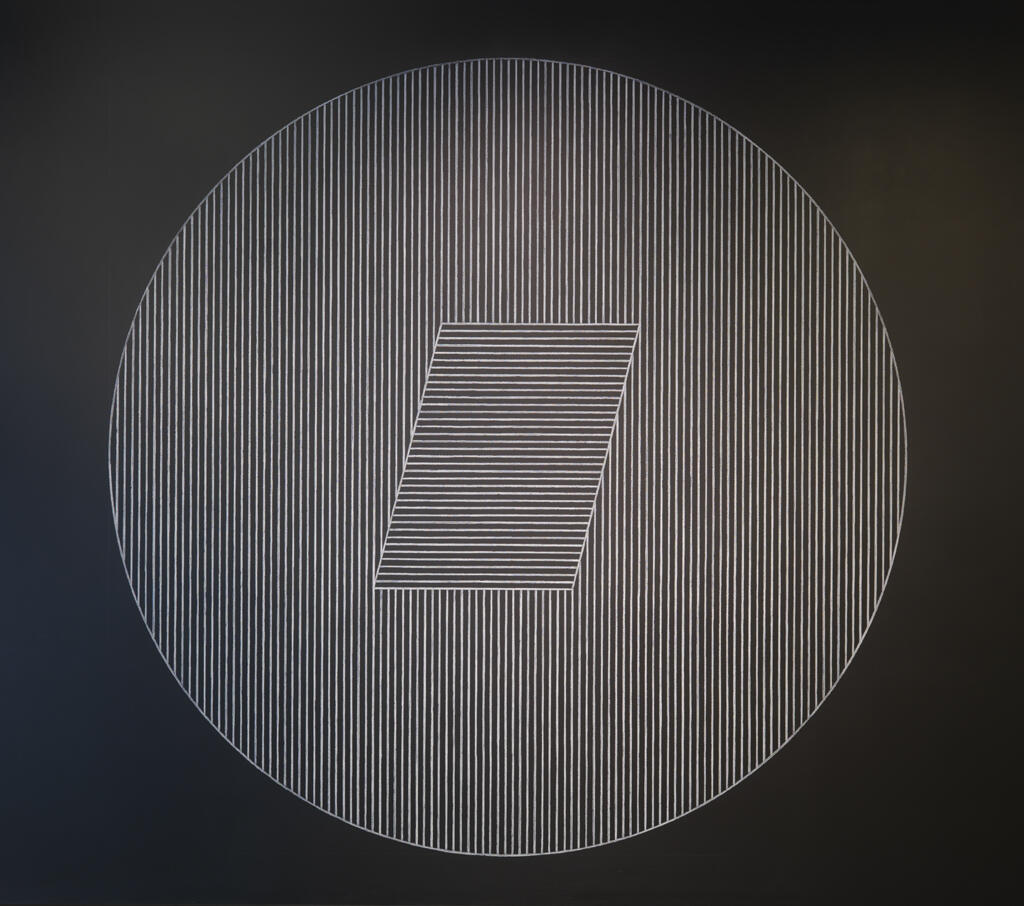In 1968, Sol LeWitt began creating his wall drawings, which consist solely of written instructions and diagrams for others to execute. LeWitt likened his instructions to musical scores, which are realized in a new way every time they’re played, and it’s possible for LeWitt’s wall drawings to take slightly different forms, depending on how his directions are implemented. Although the idea of the work is meant to be preserved, the work itself is often ephemeral, and it can exist in more than one place at one time.

At this year’s Big Draw, the Museum’s annual celebration of drawing, visitors were asked to carry out LeWitt’s written instructions for Wall Drawing #328, a work in the collection that was recently installed in the Chace Center Lobby. Set up on a table across the room from the actual work were white drawing utensils, a stack of black paper, and LeWitt’s written instructions: “On a black wall, a white circle within which are white vertical parallel lines, and a white parallelogram within which are white horizontal parallel lines. The vertical lines within the circle do not enter the parallelogram, and the horizontal lines within the parallelogram do not enter the circle.” Participants were asked to display their completed drawings on a frame next to the table, to make comparisons and note differences in interpretation.

What came out of the activity was far from a standardized version of the drawing. Some participants played with the vagueness of LeWitt’s language and made a series of drawings that fulfilled the basic instructions but varied the number and thickness of lines within the circle and parallelogram. Others used the Museum’s installation across the room as a guide to direct their creations. And still others chose to follow some of the ideas presented in the instructions, such as the suggestion of shape, but ignored others to produce a completely new creation.

These differences made clear that despite LeWitt’s desire for objectivity, a great deal of subjectivity exists when others are involved in the making. LeWitt certainly was aware of the variations that might occur, and although he might have accepted that his instructions could be drawn a number of ways, he did have preferences as to how his works were installed. That’s why, rather than using the written instructions as the sole guide for installing the wall drawing at RISD, the Museum’s installation crew was assisted by draftspeople from the Sol LeWitt Foundation who provided a diagram to help LeWitt’s idea take form.

Sarah Laperle
Museum Educator
